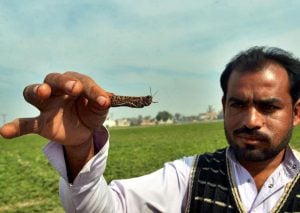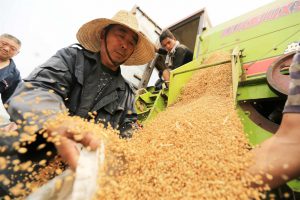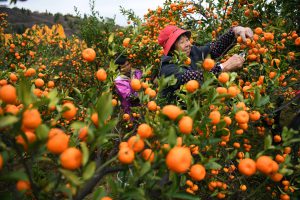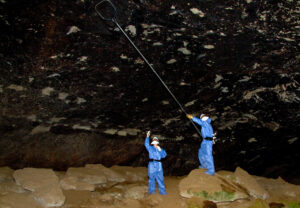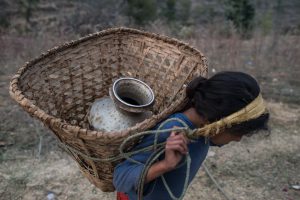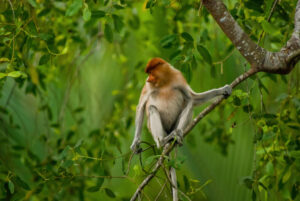The desert locust swarms that started in East Africa this February have spread to the Middle East and South Asia – and may reach East Asia. But despite Chinese concerns about a plague of locusts, the government said in early March that the real threat is a reappearance of the larvae of the fall armyworm moth. First seen in China in 2019, this insect breeds faster than locusts and is now well-established in the country, appearing in large numbers in the south and south-west.
The Ministry of Agriculture (MOA) has been issuing directives and alerts on controlling the pest since early February, and has published a list of eight chemical insecticides, six biological insecticides and 14 composite preparations recommended for emergency use. Shares in manufacturers expected to benefit rose quickly, and one securities firm predicted increased demand for substances used to combat the fall armyworm – primarily chemical insecticides.
But the MOA’s list is for emergency use only. China has been cutting down on pesticides since 2015 and has achieved sustained drops in annual usage. The government does not plan to relax strict environmental standards to deal with the armyworm. Zhu Enlin, deputy head of the MOA’s Department of Crop Production, said during a press conference last September that biological pest control methods would be deployed first, and only later would “low-toxicity preparations” and “optimised application methods” of chemical pesticides be used.
The armyworm advances
The fall armyworm originated in South America but is now what the UN Food and Agriculture Organisation (FAO) describes as “a dangerous transboundary insect”, found in over 100 countries. Reaching Asia in 2018, the FAO warned in August of that year that its arrival in India presented a threat to the food security and livelihood of millions of small-scale farmers.
The larvae devours crops before moving en masse to new pastures. An adult moth can fly 100km in a night – or be blown hundreds of kilometres across ocean expanses. In China, they consume mainly corn crops. In the eight months after its arrival in January 2019, 2.46 million mu (164,000 hectares) of fields across 26 provinces were attacked. It has spread as far as Inner Mongolia.
And 2020 may be worse still. On 21 February, the MOA published a plan to combat the pest, saying signs pointed to a bad infestation, with the insect being found in corn and wheat fields.
The pest thrives in southern China’s climate and a milder winter has allowed it to survive across a broader area and breed faster than usual. The possibility of both migrating and local populations converging on crops makes the fall armyworm threat particularly grave this year.
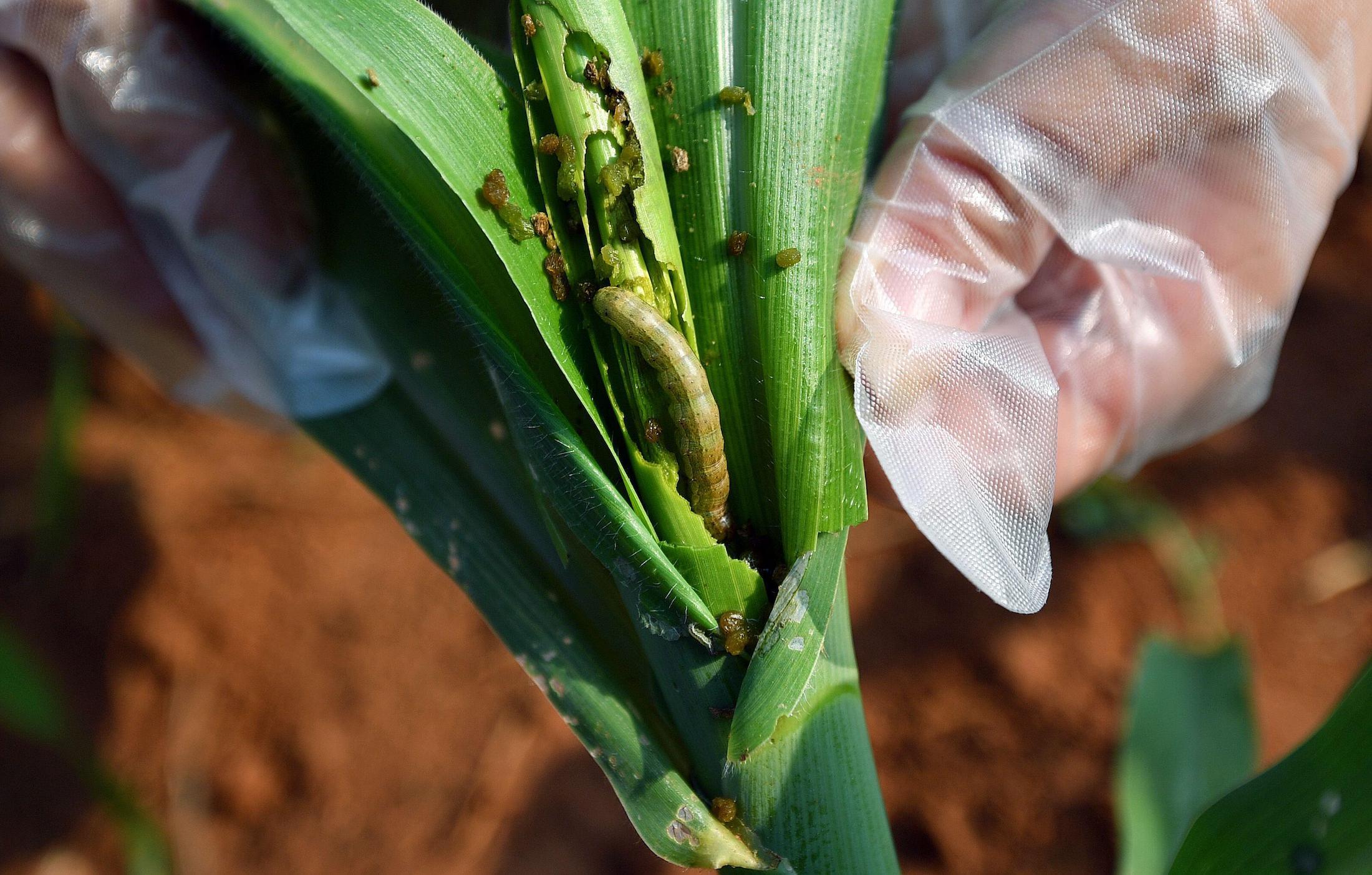
According to the MOA’s action plan, by 10 February the insect had been spotted across an area 90 times as large as last year in six provinces in south and south-west China, and so is expected to arrive earlier elsewhere. Wu Kongming, deputy head of the Chinese Academy of Agricultural Sciences and lead author of the plan, predicts the pest will head north earlier, arriving in the north-east – China’s northernmost grain-producing region – as early as June.
Non-chemical approaches
China started using large quantities of chemical pesticides in the 1970s and 80s, becoming the world’s largest user. It has suffered from water, air and soil pollution as a result. The agricultural authorities started focusing on reducing pesticide use in 2015, with an action plan published by the MOA in February of that year aiming for use to start falling by 2020. That was actually achieved in 2016, and use has shrunk annually since.
Despite the fall armyworm invasion, the government remains determined to reduce pesticide use and develop non-chemical alternatives.
In early February, the Central Committee and State Council published their annual No. 1 Document, used to guide rural and agricultural policy for the year. This made clear reference of the fall armyworm but also called for “in-depth action on pesticide reduction”.
Did you know?
The fall armyworm’s scientific name, frugiperda, is Latin for lost fruit, named because of the species’ ability to destroy crops.
On 8 April, the State Council published the Regulation on the Prevention and Control of Crop Disease and Pests. The preamble to the rules, which came into force on 1 May, said China encourages and supports green pest-control methods, including environment-friendly pest management, crop rotation and biological pest controls. It also indicated the government will support professional pest control organisations by procuring their services, and that these bodies are also encouraged to adopt green methods.
The emphasis on biological control is also apparent in the China-led international efforts to combat the fall armyworm. In November last year, a regional workshop on sustainable management of the pest, co-organised by the FAO and the MOA, was held in Kunming. The 11 nations in East, Southeast and South Asia passed an initiative on regional cooperation, including agreeing to “promote regional sustainable pest management”, and to “reduce pesticides and their associated risks”, and stating that “use of biological control options and the enhancement of natural enemies in the field should be emphasised”.
Non-chemical methods are also being emphasised at the technical level. The MOA’s action plan calls for the use of physical and chemical attractants and biological controls. Attractants can be lights, pheromones or foods used to lure insects into traps or disrupt their breeding; biological controls can be fungi, viruses and bacteria that attack the fall armyworm, or natural enemies such as wasps and aphids. When it comes to chemical methods, targeted application and the rotation of different pesticides are preferred.
A combined approach is most effective – using physical and biological pest control methods, alongside small and targeted quantities of chemicals to lock-in results.Dr Tang Zhaolei, Guangxi Academy of Agricultural Sciences’ Corn Institute
Dr Tang Zhaolei, a crop-protection expert at the Guangxi Academy of Agricultural Sciences’ Corn Institute, has been on the front lines of the fight against the fall armyworm. He told China Dialogue that a combined approach is most effective – using physical and biological pest control methods, alongside small and targeted quantities of chemicals to lock-in results. As he understands it, Guangxi is making substantial use of biological pesticides like avermectin and the nuclear polyhedrosis virus in its fight against the fall armyworm, which account for 60-70% of all pesticide use. Biological methods are already being used more than chemicals – and with better outcomes for prevention and control. He adds that shortcomings of chemical pesticides, like pests’ resistance resulted from overuse, environmental destruction, and awful smell, have prompted farmers to opt for biological pesticides, which are low-toxicity, low-residue and more effective.
Luo Shiming, an agroecologist and former president of South China Agricultural University, told China Dialogue that chemical approaches should be a last resort, used only when physical and biological alternatives have been exhausted.
Luo added that pest emergency can be avoided by enhancing the early warning systems. When warnings are triggered, timely use of non-chemical lures, pheromones, trap crops, natural enemies and micro-organisms can prevent major outbreaks.
Ecological pest control’s ‘beneficial market’
Biological pest control methods have been successfully used on fruit, vegetable and tea crops in recent years, but have not been widely applied in grain farming, where crops are planted over a broader area. Liu Yusheng, a professor at Shandong Agricultural University’s College of Plant Protection, thinks widespread use of biological methods could see use of chemical pesticides drop to 20% of current levels.
Such methods were once commonly used in China, but after decades of chemical over-use, change will take time. Luo says that compared to chemical pesticides, biological methods provide ecological benefits, which is in the public interest, but they are not necessarily rewarded by the market. So, in order for the agricultural sector to adopt them, government support in the form of public finance, favourable financial policies and marketing strategies are needed. Wang Huo, deputy secretary-general of the China Biodiversity Conservation and Green Development Foundation, told China Dialogue that markets alone will struggle to popularise biological pest control methods, and the government will have to provide policy and financial support.
“Different pests have different natural enemies, and currently too few of those can be produced at scale in China. Also, farmers rely heavily on chemicals and are unaware of biological alternatives, and it’s hard to have them change overnight,” said Song Yilin, general manager of Guangxi Nanning Heyi Biological Control Ltd. His company is working to breed Trichogramma chilonis and Telenomus remus – both parasitic wasps – and other fall armyworm parasites.
These approaches are being reflected in official documents. The aforementioned State Council’s new regulations on pest control, which came into force on 1 May, said the government would encourage and support commercial pest control firms by procuring their services – and that such organisations were encouraged to use green pest control methods.
Song Yilin’s firm has been providing crop-protection services, including pest monitoring, release of natural enemies and labour to the government since 2013. He told China Dialogue that half of the company’s income currently comes from Guangxi’s crop-protection authorities, with about 20 million yuan (US$2.8 million) in turnover last year: “I can’t sell to small-scale farmers with tens or hundreds of mu, we need to work across expanses of thousands of mu simultaneously to be effective. And as the government purchases our services, more and more farmers will learn about our techniques and realise using natural enemies is preferable to using chemicals.” He hopes the new pest-control regulations will help promote biological methods.
Liu Yusheng’s team is researching the breeding of Arma chinensis, or stink bug, another natural enemy of the fall armyworm. They are already selling other fall armyworm enemies, such as ladybirds, to vegetable and fruit farmers in nature reserves. He sees potential in the biological pest-control market, but while government procurement can help at the current stage, in the long-term these methods will have to expand via the market. Only a fully fledged market for biological control methods will improve technology, reduce costs, and meet the varied needs of the farming sector.
The fall armyworm threat leaves little time to waste. Experts say climate change increases the risk of pest outbreaks, which may become a more common phenomenon. Luo Shiming thinks that while a non-chemical approach is technically feasible, popularising this will be a long-term undertaking, needing perhaps five to ten years.


